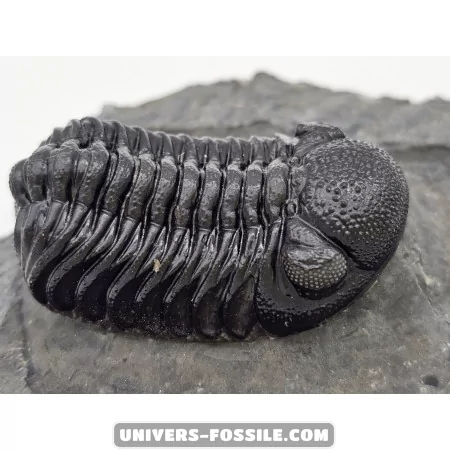Phacops Trilobites - Fossils from the Devonian Period

Phacops Trilobites
Phacops trilobites are a fascinating species of trilobites that thrived millions of years ago. Belonging to the class of arthropods, these prehistoric creatures are living fossils that have captivated the imagination of paleontologists and natural science enthusiasts.
Origin and Evolution
Phacops trilobites lived during the Paleozoic era, approximately 400 to 450 million years ago. They were widespread in the shallow seas that covered much of the Earth during that time. Their segmented body and hard exoskeleton helped them survive and thrive in a variety of marine habitats.
Anatomy
Phacops trilobites are characterized by their segmented external exoskeleton, which is divided into three distinct lobes. They also possessed large compound eyes, which were likely used to spot prey and detect predators in their environment. Their segmented appendages allowed them to move with agility on the seafloor.
Habitat and Lifestyle
Phacops trilobites were benthic creatures, meaning they primarily lived on the seafloor. They likely fed on organic debris and small organisms they found in the marine substrate. Their ability to move quickly allowed them to evade predators and
Phacops Trilobites
Phacops trilobites were fascinating creatures that inhabited the ancient seas of the Earth hundreds of millions of years ago. Fossils of Phacops are quite common in certain regions of the world, notably North America and Europe. These well-preserved fossils offer valuable insights to paleontologists about the biodiversity and evolution of ancient marine ecosystems.
The remains of Phacops trilobites are often discovered in sedimentary layers dating from the Devonian period, a geological timeframe that extended from 419 to 358 million years ago. By studying Phacops fossils, scientists can gain a deeper understanding of prehistoric marine life and unravel the mysteries of our planet's past.
The complex anatomy and intriguing lifestyle of Phacops trilobites make them a subject of continued interest among both researchers and enthusiasts of paleontology worldwide. Their significance in understanding the Earth's geological history remains unparalleled, sparking curiosity and fascination in those intrigued by the ancient world around us.
